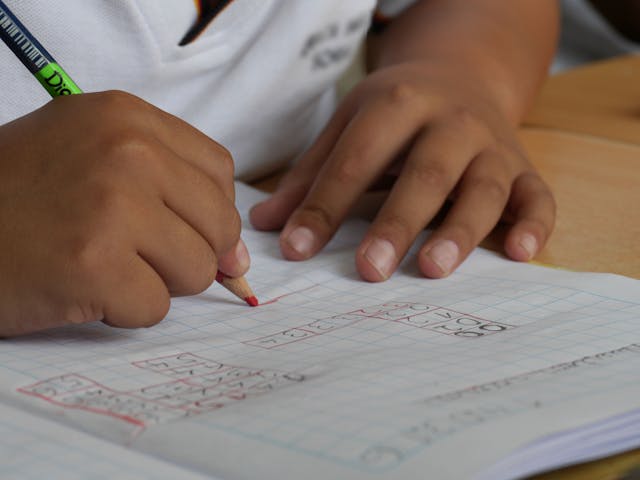Smart aleck answers on tests: Clever, cheeky responses that students give under pressure or just for fun.
Ever glanced at a test paper and wiped away a smirk because a student’s answer made you laugh (or groan)? Those momentary detours from rigid “right vs wrong” answers, the smart aleck responses, are little bursts of personality in a world of blanks and bubbles. They tell you more than just what the student doesn’t know; they hint at how they think, how they cope under pressure, and sometimes even how they view authority. This article dives deep into smart aleck answers on tests, why they happen, what they reveal, and what teachers, students, and parents can do about them.
What You'll Discover:
Why Smart Aleck Answers Happen
Pressure, Uncertainty, and the Urge to Fill Space
When a student hits a blank and stares at a question, adrenaline kicks in: they feel they must put something in. Whether to avoid a zero, to look engaged, or simply to break the tension, they might scribble the first thought that comes to mind. The brain searchlight is off, so the suitcase of random ideas tumbles out.
Rebellion, Humor, and Authority Checks
Sometimes, smart aleck answers are a quiet protest. The student may feel trapped by the format or by the stakes of the test. These offbeat responses allow them a small moment of control, of pushing against the rigidity of exam rules. Humor becomes armor.
Creative Thinking (or Sharp Wit) in Disguise
Believe it or not, a weird answer can reveal creative energy. A student might map known concepts to unfamiliar ones, or use analogies (even flawed ones) to make sense of a question. The smart aleck answer might not be scientifically correct, but it can reflect a lateral thinking process.
Social Identity and Peer Signals
Some students lean into being “the funny one” in class. They know that a wildly off-the-wall answer might get shared, laughed at, or remembered long after test day. That attention, for better or worse, is a payoff.
Types of Smart Aleck Test Answers
Literal Twisting
Here the student takes the wording ultra literally. Example: “Where was the Declaration of Independence signed?” → “At the bottom.”
Deferred Explanation
Instead of answering directly, the student postpones or redirects: “If the question is ‘Name the stages of mitosis,’ answer: ‘It’s a secret.’”
Humor-Based Distraction
Injecting a joke that’s so offbeat it distracts from the failure: “What is hard water?” → “Ice.”
Wordplay & Puns
Playing on double meanings or homophones: “Convert 5 cm to meters” → “Take out ‘centi.’”
Self-Referential or Meta
Answering the question by reflecting on the test itself: “What is a risk?” → “This.”
Sarcastic / Sassy Response
When students feel cornered, they might deliver a sarcastic punch: “I don’t know” becomes, “I tried, but the question ran away.” Teachers often record a note like “Nice try.”
What Smart Aleck Answers Reveal
Hidden Gaps and Zones of Knowledge
A joke implies risk. The student likely knows they don’t know the correct answer. That’s an implicit admission of uncertainty, more useful than a blank stare. Teachers might identify zones where instruction falters.
Thinking Patterns (Even Faulty Ones)
Even a wrong or off-kilter answer gives insight into how the student’s mind attempts to map the question. You can see analogical leaps, linguistic pivots, or dead-end associations.
Emotional State Under Test Pressure
These replies often appear under stress. A nervous or anxious student might be more prone to defaulting to humor or sidestepping. It signals tension, not just ignorance.
Student–Teacher Relationship Underneath
A student who frequently does this may be testing boundaries. If their jokes are ignored or punished, they might withdraw; if they’re engaged, it could open new rapport channels.
Are Smart Aleck Answers Always Bad?
Pros
- Engagement signal: The student is trying something, rather than giving up entirely.
- Emotional relief: Humor can defuse test anxiety.
- Diagnostic tool: Teachers can detect misconceptions or misunderstandings.
- Bonding moment: A clever answer might foster teacher–student connection (if handled well).
Cons
- Loss of credit: The answer is still wrong, so marks may be lost.
- Encouragement of frivolity: Too many jokes erode the seriousness of testing.
- Distraction for graders: Teachers may spend extra time deciphering a joke instead of straightforward grading.
- Masking avoidance: Students might use smart-aleck style as a shield, not a genuine mode of thought.
How Teachers Can Respond Strategically
Don’t Respond with Anger
Reacting harshly punishes risk-taking. Instead, respond with curiosity: “I like your thinking, how would you back that up with evidence?”
Document & Analyze
Keep a ledger of patterns: when, in which subject, from whom. This can reveal stress points or weak content areas.
Use as Teaching Moments
Select clever wrong answers (anonymously) as class discussion prompts: “Let’s examine why this answer fails, but also what parts might contain insight.”
Offer Partial Credit Paths
If the answer shows a kernel of concept (even flawed), consider awarding partial marks. It encourages thinking, not rote regurgitation.
Encourage Structured “Humor Time”
Allocate a few minutes at the end of quizzes for “creative mis-answering”, a safe space for students to display wit. That frees them from doing it impulsively during graded questions.
How Students Can Use Smart Aleck Style Wisely
- Prioritize content mastery first. The jokes should only surface when you truly don’t know or want to show lateral thinking, not as a default.
- Make it relevant. If your joke still references the question’s content (even loosely), it’s more meaningful.
- Don’t overdo it. One clever joke among mostly solid answers is memorable; a sheet full of them feels like giving up.
- Frame humor as thinking. After your smirk-inducing line, in your scratchpad or margin, you might outline your fallback or thought path. That shows you attempted.
- Know your teacher. Some instructors appreciate cleverness; others see it as disrespect. Calibrate accordingly.
Sample Smart Aleck Answers (and What They Teach)
| Question | Smart Aleck Answer | What It Suggests / Why It’s Funny |
|---|---|---|
| “Where was the Declaration of Independence signed?” | “At the bottom.” | Literal play on “signed” rather than location. |
| “What is hard water?” | “Ice.” | Taking “hard” as frozen rather than chemically hard. |
| “Convert 5 cm to meters.” | “Take out ‘centi.’” | Punning on “centi” prefix removal. |
| “Write an example of risk.” | “This.” | Self-referential humor. |
| “Name the stages of mitosis.” | “It’s a secret.” | Deferral by humor. |
After seeing such a table, a teacher might ask: “Why did the student map ‘ice’ to ‘hard water’? Maybe they confuse physical hardness with chemical hardness, so let’s revisit that distinction.”
When Smart Aleck Answers Go Too Far: Pitfalls to Watch
- Offensive sarcasm: Jokes that insult classmates or the teacher cross a boundary.
- Irrelevant tangents: If the answer veers wildly off-topic, it loses diagnostic value.
- Patterned deferral: If a student uses humor as a shield across the board, it may halt genuine learning.
- Lazy humor: Jokes that show no attempt at thinking can degrade the test’s integrity.
Integrating Smart Aleck Answers into Classroom Culture
“Funny-Wrong Answer” Board
Have a wall or digital board where (anonymous) clever wrong answers go. Students enjoy seeing their peers’ wit, and it reminds everyone learning includes trial and error.
Humor + Reflection Journals
After quizzes, ask: “Which question made me want to write a joke, and why?” That helps students self-reflect on stress, mindset, and strategy.
Peer-Review Laugh & Learn
In group reviews, let students present one funny wrong answer and explain what led to it, then correct it. That transforms errors into collective insight.
Grading Rubric Addendum
Include a small bonus “creative thought” mark for attempted wit that shows a path toward reasoning, even if off.
SEO Optimized Tips for Writing About This Topic
- Use “smart aleck answers on tests” exactly as a phrase (in title, first paragraph, subheadings, conclusion).
- Sprinkle close variants: “smart-aleck test replies,” “funny exam answers,” “cheeky student responses.”
- Include real-world examples (as above) to keep readers engaged.
- Link to credible sources (teaching blogs, psychology studies) to ground humor in theory.
- Use lists, tables, and bullet points to break dense text for readability.
- Incorporate internal links if this is on a site: e.g. link to a teaching-methods article, an exam stress piece, etc.
- Encourage social engagement: invite readers to share their favorite smart aleck answers in comments.
Key Takings
- Smart aleck answers on tests arise from pressure, humor impulse, and boundary-testing.
- They offer diagnostic value: revealing gaps, thinking patterns, and emotional state.
- Teachers should respond with curiosity, not scorn; use the answers as teaching moments.
- Students can use them judiciously, never as a substitute for content knowledge.
- Smart aleck culture in class (via boards, reflections) can normalize risk-taking and reduce anxiety.
Additional Resources:
- Visible Learning and the Science of How We Learn: Comprehensive guide to evidence-based teaching strategies and cognitive science.
- The New Psychology of Success: How beliefs about ability shape responses to challenges, including tests.





